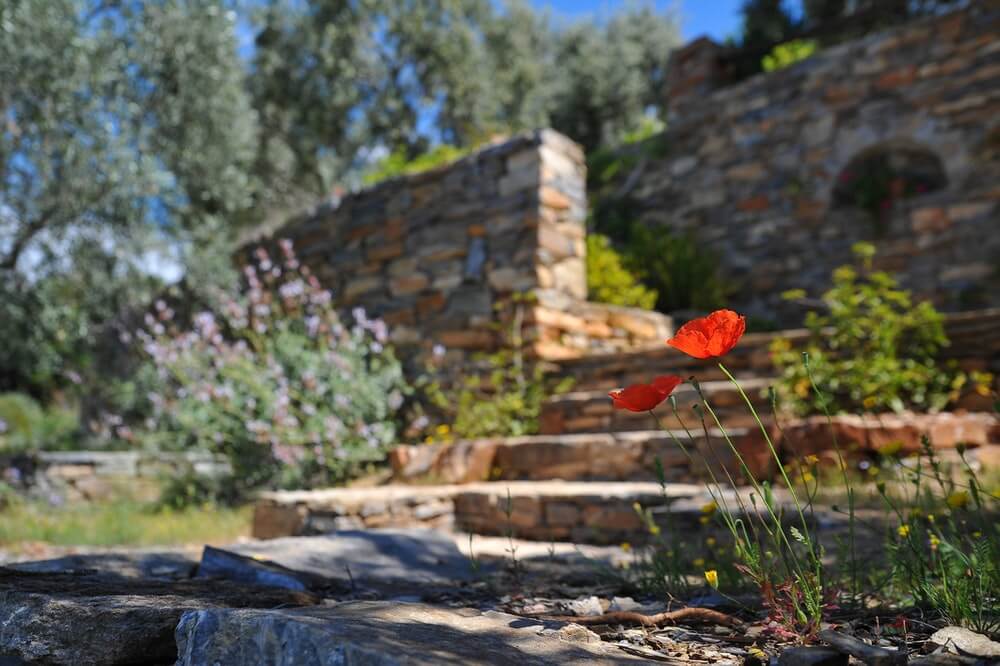Retaining Wall vs Landscape Wall, Which is Better?

Spending time in your backyard can be blissful, as long as this outdoor space matches your likes and needs. Just imagine retreating into a green corner after a long day, admiring rows of fresh flowers in raised garden beds, or enjoying some privacy at the pool behind a discreet privacy wall.
The best backyard designs include areas of relaxation, social events, play areas for your children or pets, beautiful framing for your gardening projects, or anything that makes you happy. When the elements of your backyard come together ideally in terms of aesthetics and function, you can truly enjoy the little piece of heaven around your house.
If you ever tried to plan a remodelling of your backyard, you already know that it’s easier said than done. The secret to landscaping an outdoor space is to cleverly use the space you have and separate different areas of interest. Privacy walls, retaining walls, and landscaping walls are quintessential for outdoor landscaping.
‘Brick by Brick’ Break Down – Retaining vs Landscaping
There are two main wall categories to choose from when adding walls to your outdoor space, and they relate to both function and decorative purposes.
Retaining walls are more functional in that they hold a wedge of soil and keep it from creating a natural slope. You can use them to create more space in areas with natural hills and raised areas. They are also great tools for creating more levels for multi-dimensional landscaping.
A landscaping wall, on the other hand, has a decorative purpose. It doesn’t need to support soil structurally but more for dividing between landscaping features, such as flower beds, pool areas, pathways, or patios.
Features and Functions – Retaining Walls
Retaining walls have a specific function: they must support the weight of a mass of soil, holding it back. When building a retaining wall, specific engineering requirements have to be met to ensure the good functioning of the structure. The wall must be heavy and planted deep enough to sustain great horizontal forces.
Before building, retaining wall specialists decide what material should be used for it, how high the wall must be, and how to anchor it in the ground. If the mass of soil that has to be retained is very heavy, retaining wall builders have to use reinforcing steel rods and excavations for a deep anchor.
Here are some of the materials that one can use for this type of construction:
- Timber sleeper retaining walls. Wood has been used for building retaining walls for thousands of years. Certain types of hardwood timber are used successfully for supporting wedges of soil. However, wood should generally be reserved for smaller retaining walls that don’t have to hold a steep slope.
- Concrete sleeper retaining walls. Concrete sleepers are ideal for building retaining walls, as concrete is extremely durable, easy to pour in any shape (with various decorative textures and stains), and easy to interlock. Concrete sleepers can also be reinforced with steel to ensure stability and strength.
- Natural stone concrete walls. Natural stone is a highly desirable material for landscaping, because of its unmatched beauty and high durability. Retaining wall contractors typically recommend using natural stone only for shorter walls. A perfect example would be retaining walls used to create tiered gardens, as they will look amazing while creating levels at different heights for your plants.
The Beauty in Building – Landscaping Walls
Walls are very practical for landscaping, and there are many more wall styles you can find in a garden or backyard. Landscaping walls are highly versatile design elements, and you can use them in tons of ingenious ways too.
You can create incredible effects by adding landscaping walls. Some of these effects include texture, height, curvature or angles, colour, and space delimitation. A good contractor working with a landscape specialist can transform any backyard or garden with the help of landscaping walls.
Walls used in landscaping are made of many materials, depending on their purpose and what effect you want to achieve. Some of the most common materials used are:
- Greenery. When you only want to delimit the space in your backyard or are looking for privacy between you and your neighbours or passers-by, a green wall is ideal. It is a natural addition to the design, and it’s not hard to maintain, offering shade and a beautiful view from your home or porch.
- Concrete. As mentioned earlier, concrete is incredibly versatile and can be poured into sleepers with added texture, colour, and shape. You can build long-lasting, very durable landscaping elements out of concrete, and it’s relatively affordable.
- Limestone and other natural stones. Limestone is a beautiful material to work with, and it integrates perfectly with any garden style. Limestone can be cut in different sizes and create various effects, and it ages beautifully, adding value to your home.
No Time to Be A Wallflower
It should be clear by now that retaining walls and landscaping walls are some of the best possible additions to your garden or backyard when you want to change the look or functionality of your outdoor space. The difference between them is mainly about the function they perform.
Retaining walls have to meet specific requirements to safely and efficiently support the weight of soil and water behind them, while landscaping walls can go wherever needed.
No matter what kind of wall you want to build, you should consult an experienced contractor to get a professional opinion. It is especially true for retaining walls. Retaining wall contractors can help you raise a sturdy, well-drained structure that won’t collapse under pressure. They can also build any landscaping wall you want to include in the design.
Here at TFR Construction, our construction specialists have worked on a wide range of retaining wall and landscaping wall installation projects. Our experts can help you make your ideas come to life with no compromises in terms of safety and durability. Contact us for more details or to request a quote today!
Recent Posts
A Parcel for the Picking – Things to Consider When Buying Land for Your Home
Selecting the proper parcel of land might be challenging but approaching the task with the correct knowledge makes it worthwhile.
Stone Landscaping: Adding Statement Stone and Boulders to Your Landscape
Stone landscaping is low maintenance, sustainable, and extremely versatile. Here is a realistic view of the main pros and cons of stone landscaping.
5 Ways to Beautify Your Sleeper Retaining Walls
In this blog post, we examine how you can combine looks and function with the latest designs of retaining walls available today.
How Sleeper Retaining Walls Can Help with Property Water Drainage Systems
We take a closer look at why retaining walls can be a fantastic solution for redirecting water around the house and protecting your foundation.
What Is a Commercial Contractor?
Contractors who work on commercial buildings have the know-how, expertise, and certifications to handle commercial construction work. But what exactly is a commercial contractor, and do you need one for your next project? Read on to find out if a commercial contractor is right for you.
Recent Posts
A Parcel for the Picking – Things to Consider When Buying Land for Your Home
Selecting the proper parcel of land might be challenging but approaching the task with the correct knowledge makes it worthwhile.
Stone Landscaping: Adding Statement Stone and Boulders to Your Landscape
Stone landscaping is low maintenance, sustainable, and extremely versatile. Here is a realistic view of the main pros and cons of stone landscaping.
5 Ways to Beautify Your Sleeper Retaining Walls
In this blog post, we examine how you can combine looks and function with the latest designs of retaining walls available today.
How Sleeper Retaining Walls Can Help with Property Water Drainage Systems
We take a closer look at why retaining walls can be a fantastic solution for redirecting water around the house and protecting your foundation.
What Is a Commercial Contractor?
Contractors who work on commercial buildings have the know-how, expertise, and certifications to handle commercial construction work. But what exactly is a commercial contractor, and do you need one for your next project? Read on to find out if a commercial contractor is right for you.





